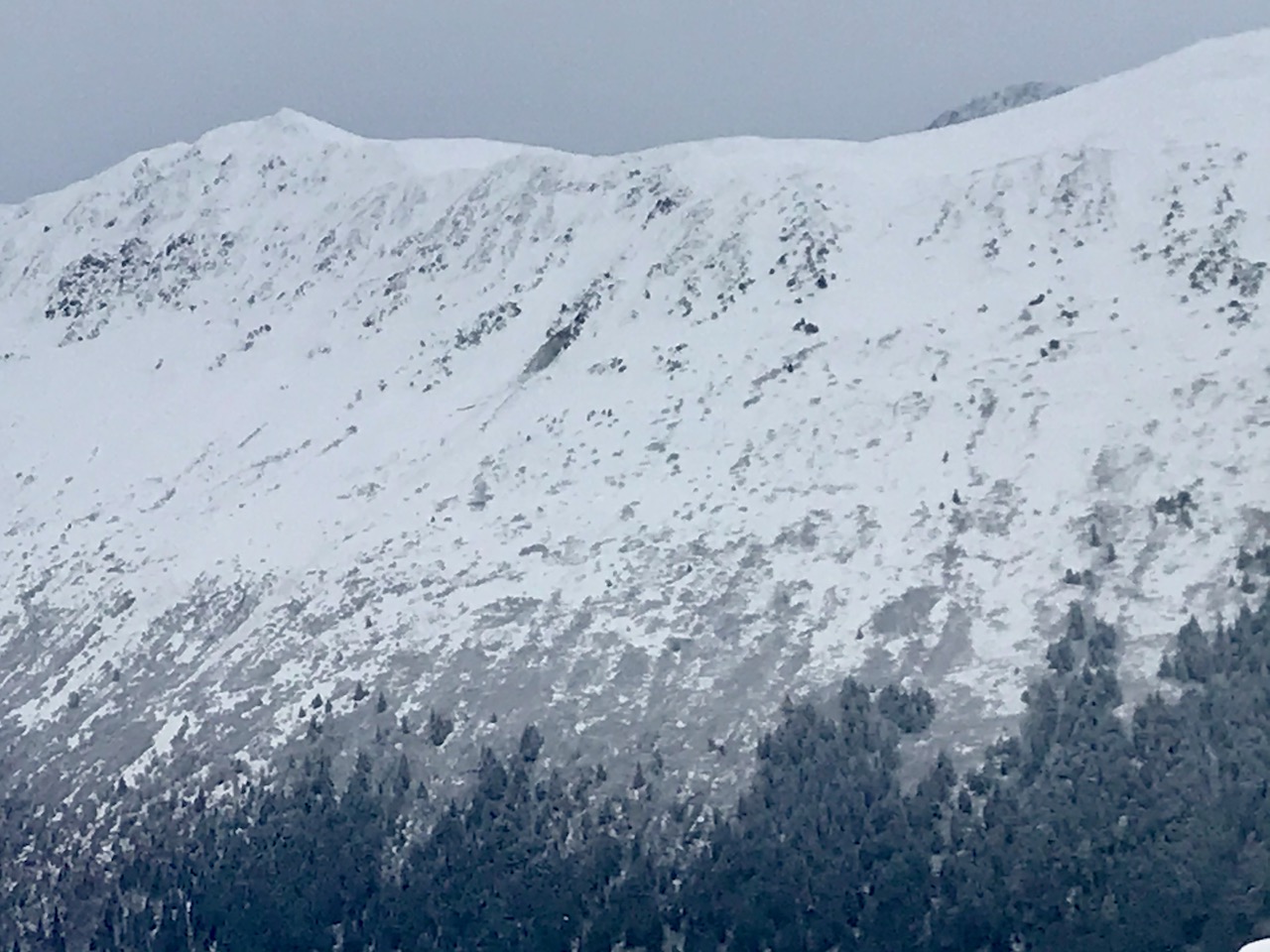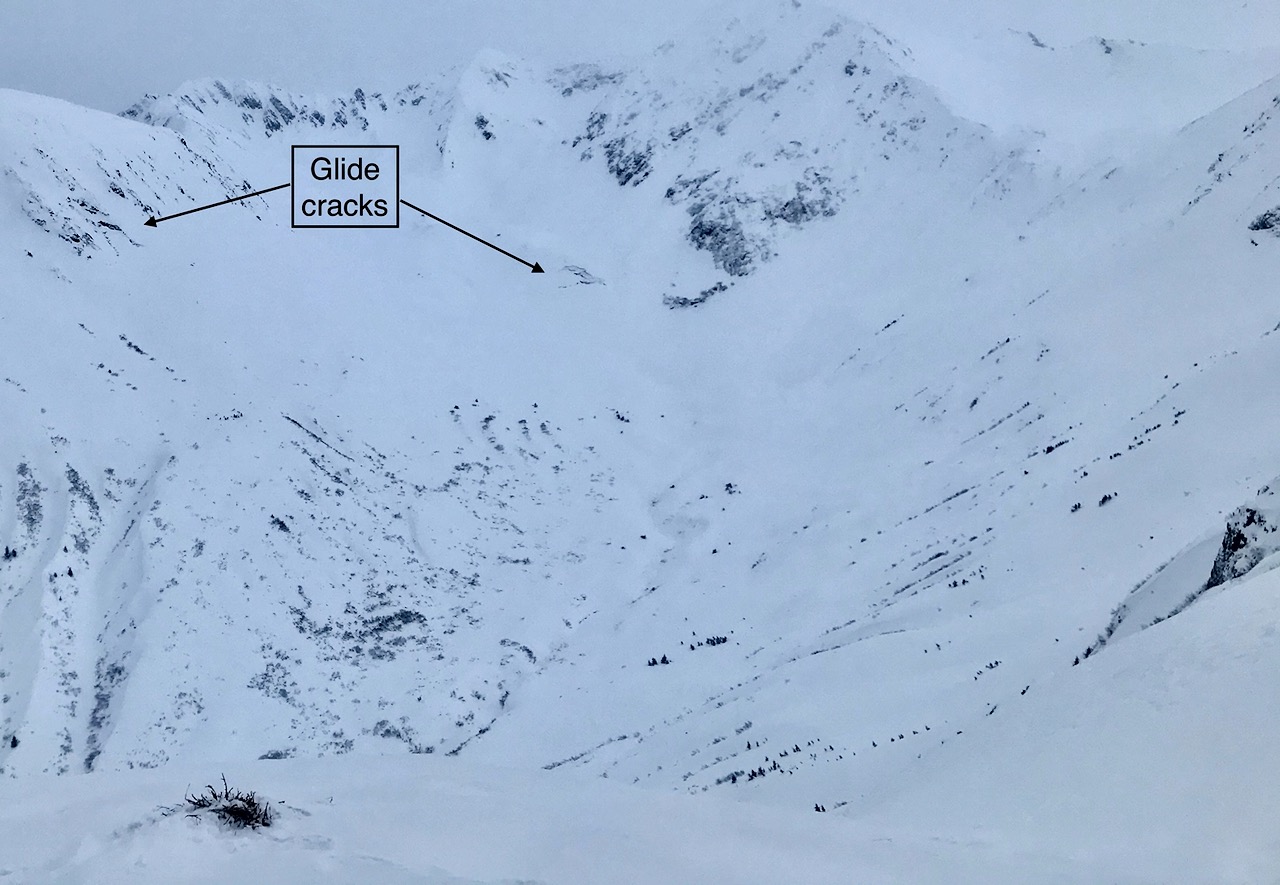Fresh shallow wind slabs, up to a foot deep, will be the name of the game. A few inches of snow and moderate to strong east wind has arrived. The mountains have picked up between 1-3″ of low density snow overnight with another 2-4″ possible today. The snow is sooo light it’ll have an easy time being blown into new drifts and slabs. With such low snow amounts, it will be winds that will be the avalanche problem driver. Ridgetop east winds have been averaging 15-20mph overnight, yet are forecast to increase through the day to 25-35mph and even more tonight with 35-40mph averages.
How much older loose snow exists to be available for transport and add to the size of these new slabs? Well, plenty pending on the location. The northwest winds from last Saturday moved a good portion of it around, especially along the ridgelines, but this is a different wind direction and we can bet older snow will be adding to new slabs. Additionally, slabs could be very touchy as they will be sitting on weak faceted snow and possibly surface hoar.
What to watch for if you’re headed out:
- Is the wind blowing where you are and actively loading slopes?
- Do you see/feel stiff snow over softer snow, hollow feeling snow?
- Any cracks that shoot out from you or collapsing in the snow under you?
- All these are clues you have found a wind slab.
There is also still a chance a persistent slab avalanche could be triggered. There is an older layer of buried surface hoar from 1.28 that is still on our radar sitting under old wind slabs. It is 8-16″ below the surface and showing signs of becoming harder to fail, which is good news. However, it still deserves our respect. A person or a fresh wind slab triggered may be able to step down to this layer. Something to keep in mind in big terrain.
Sluffs: If there are steep slopes out of wind, watch your sluff. These continue to be easily triggered and high volume in steep sustained terrain.
Cornices: Some cornice development is likely today. As always, give them a wide berth and limit exposure under them.
 A look at the top 8″ of snow of the snow pack from Aleph’s field day on Orca yesterday. Soft snow available to be blown around over a future weak layer of buried surface hoar. 2.9.21.
A look at the top 8″ of snow of the snow pack from Aleph’s field day on Orca yesterday. Soft snow available to be blown around over a future weak layer of buried surface hoar. 2.9.21.
 Wind effect along the high terrain from Saturday’s northwest winds. Not a lot of snow to be blown around here, but there is just off the ridgelines. Photo from 4,500′ looking northerly into Skookum drainage and at Byron Pk and Carpathian. 2.8.21.
Wind effect along the high terrain from Saturday’s northwest winds. Not a lot of snow to be blown around here, but there is just off the ridgelines. Photo from 4,500′ looking northerly into Skookum drainage and at Byron Pk and Carpathian. 2.8.21.

 A look at the top 8″ of snow of the snow pack from
A look at the top 8″ of snow of the snow pack from  Wind effect along the high terrain from Saturday’s northwest winds. Not a lot of snow to be blown around here, but there is just off the ridgelines. Photo from 4,500′ looking northerly into Skookum drainage and at Byron Pk and Carpathian. 2.8.21.
Wind effect along the high terrain from Saturday’s northwest winds. Not a lot of snow to be blown around here, but there is just off the ridgelines. Photo from 4,500′ looking northerly into Skookum drainage and at Byron Pk and Carpathian. 2.8.21. Glide avalanche on Penguin Ridge yesterday. Look for the dark spot in the middle of the photo. 2.9.21.
Glide avalanche on Penguin Ridge yesterday. Look for the dark spot in the middle of the photo. 2.9.21. Glide cracks in upper Virgin Creek in the Girdwood area. 2.9.21.
Glide cracks in upper Virgin Creek in the Girdwood area. 2.9.21.